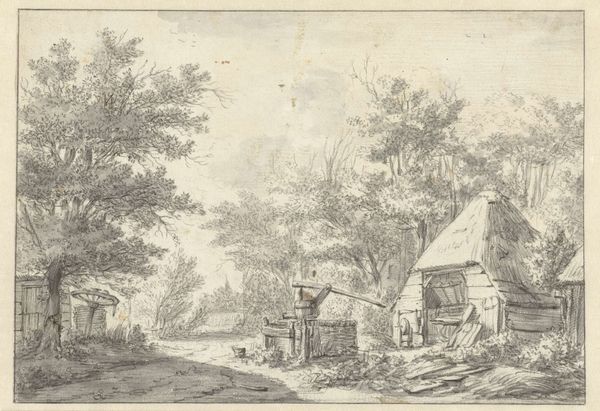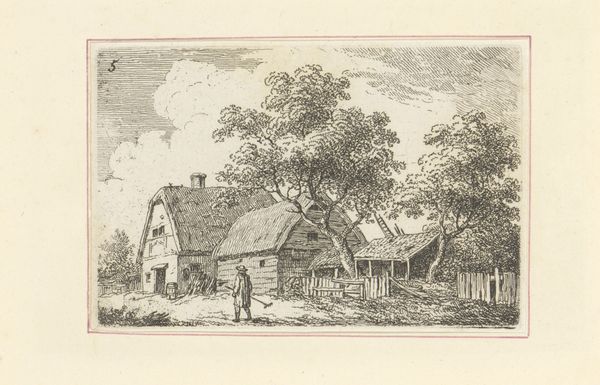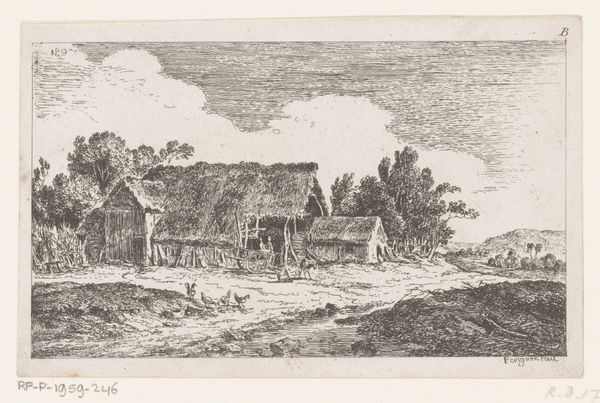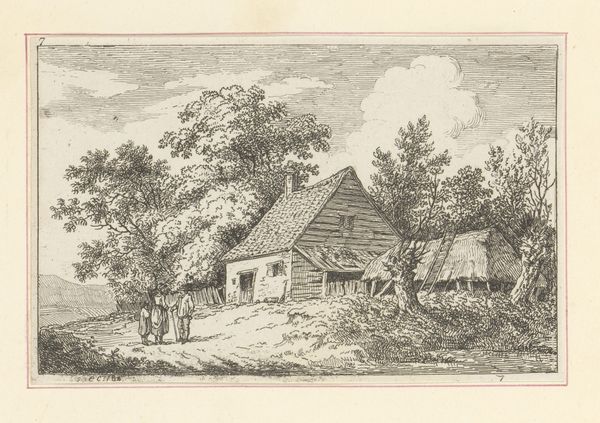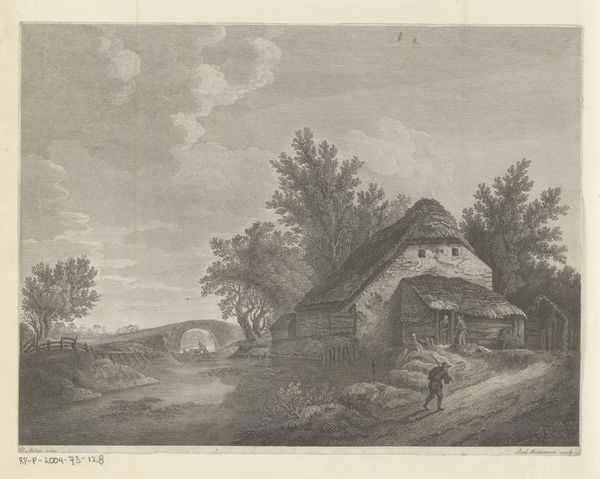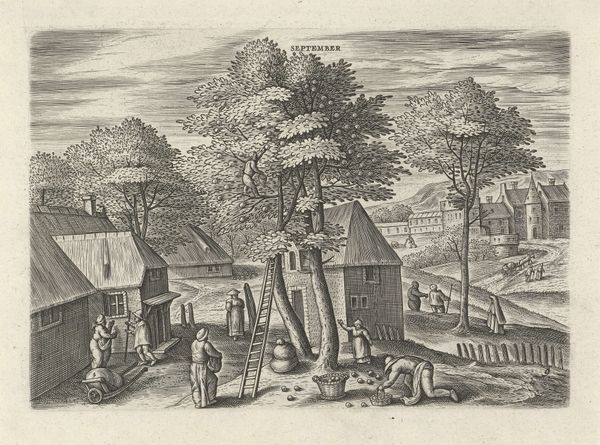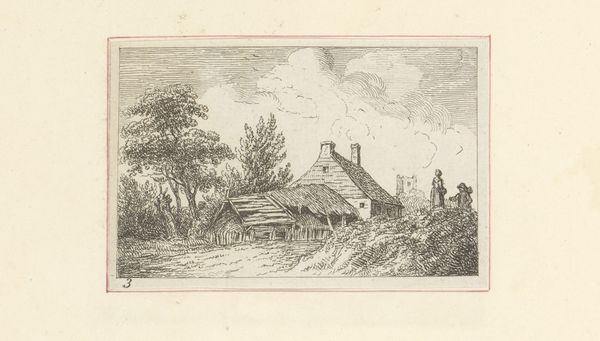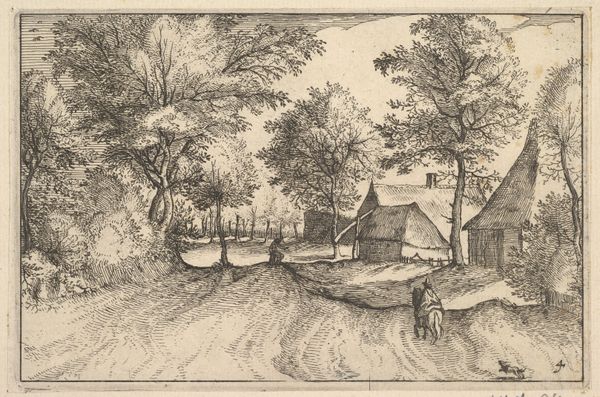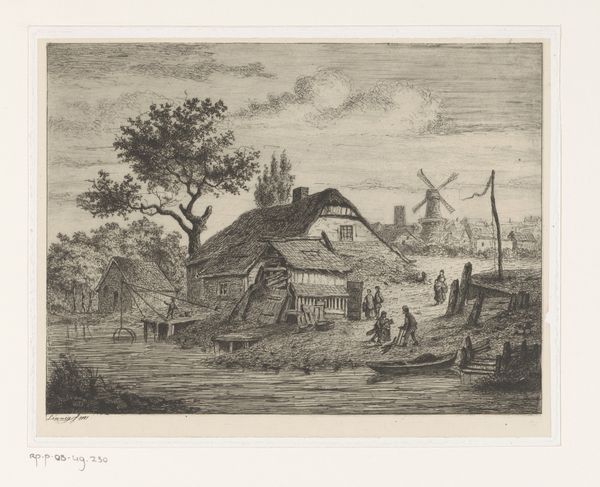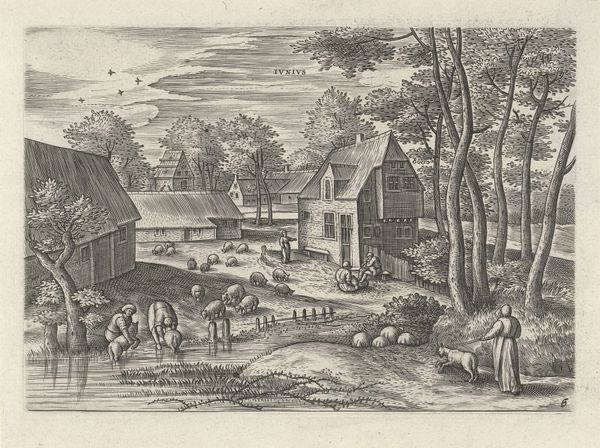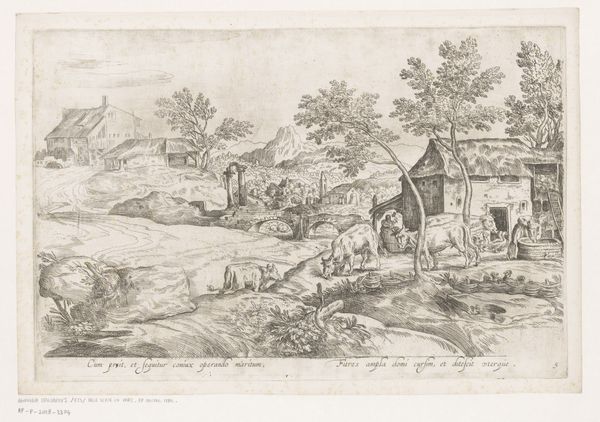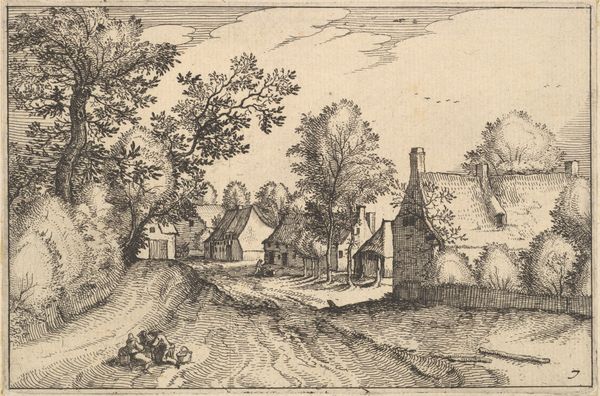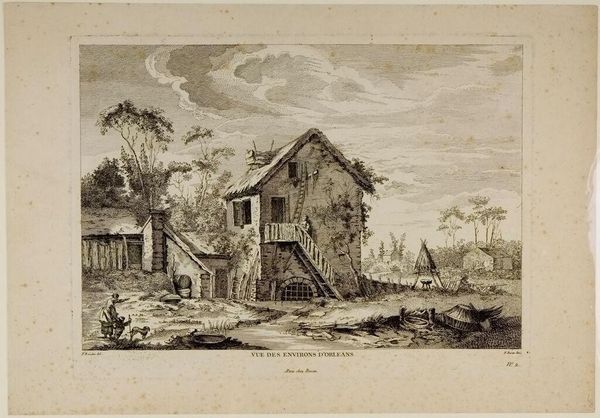
Copyright: Public Domain
Johann Georg Wille rendered this village landscape before a smithy with etching techniques. Notice the smoke billowing from the smithy’s chimney. Smoke, throughout art history, transcends its literal form, becoming a potent symbol. Consider its presence in religious art, like depictions of the fiery depths of hell or the smoke that rises during sacrifices, signifying both destruction and transformation. It appears in Dutch Golden Age paintings to hint at the transience of life. The wisps of smoke connect to our collective memories of hearth and industry. Here, the smoke suggests the constant labor and transformation occurring within the village. Wille masterfully taps into the human psyche, using smoke to evoke a sense of both the everyday and the eternal, engaging viewers on a deep, subconscious level. The visual symbol of smoke offers a non-linear progression. It resurfaces, evolves, and takes on new meanings across various historical contexts and cultural narratives.
Comments
No comments
Be the first to comment and join the conversation on the ultimate creative platform.
